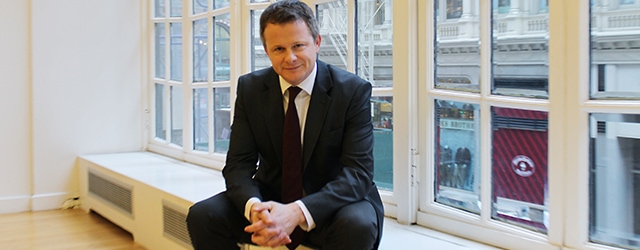Global Salon

Global Finance sat down with Tom Speechley, a partner in emerging markets private equity investment firm Abraaj Group and CEO of Abraaj North America, to discuss key markets for investment, future EM stars and the lure of cities as investment destinations.
Global Finance: In which countries do you invest?
Tom Speechley: We find that countries with a high proportion of domestic consumption in their GDP provide for more predictable outcomes for us as an investor, as opposed to those reliant on exports, which are cyclical. If you take the Pacific Alliance countries in Latin America as a bloc—Mexico, Peru, Colombia and Chile—66% of the total economy is made up of domestic consumption. We find that consumers are like a force of nature: They are predictable and provide visibility on demand.
We invest in Mexico, Peru, Colombia, Chile, Nigeria, Ghana, South Africa, Morocco, Tunisia, Egypt, UAE, Saudi Arabia, Turkey, Singapore, Thailand, Vietnam, Philippines, Malaysia and Indonesia.
GF: Are there countries where you do not invest?
Speechley: For us, the country where we invest has to have passed the ideological debate of being pro private enterprise. It must have adopted a pro-business reform agenda and had successive governments all supporting that. We are not investing in Venezuela or Argentina, for example.
In fact, we believe we invest more in cities than in countries. We invest in 30 to 35 cities globally. Cities are where the best opportunity is because they are growing much faster than the national averages. In cities people start eating at restaurants for the first time and open their first bank account and buy their first moped and their first insurance for it. Cities are places where opportunities can be much better observed. If you look at stats such as household income or consumption, you find that city averages are often two-to-three times the country’s averages. If Indonesia is growing at 5%, Jakarta is probably growing 13% or more.
GF: How much have the countries in which you are investing changed in the past few years?
Speechley: We are not investing in BRICs because we like economies and opportunities that are primarily driven by demographics and urbanization.
There are plenty of opportunities out there, and the opportunities today outstrip the opportunities five or 10 years ago by a significant multiple. Africa’s GDP quadrupled in the last 10 years. Turkey’s GDP tripled in the last 10 years. The chances to invest, and invest profitably, in the global growth markets are just increasing year-on-year. We have taken institutional investors into all of these markets and delivered successful round trips—i.e., exits.
There are a number of myths people have regarding developing markets. One, that the BRICs are a proxy for emerging markets. For the reasons I said there are a lot of opportunities beyond the BRICs. Two, that you should follow the headlines. This is obviously wrong, because headlines are much more volatile than the reality. The media tends to tune in at exactly the wrong time, only when there is a crisis, and to miss the huge wealth creation going on all the time. Three, macro data captures the opportunity. In fact, you should look at cities, not at countries, for the reasons I mentioned. Four, risks are higher in emerging markets. If your company is growing 30% per year, it can take a lot of external shocks and still be an extremely profitable company. If your company is growing 2% every year, it does not take a lot for it to end up in negative territory. So you can make an argument that the risks to achieving your target return are not higher but lower. Five, you can access these opportunities through the public markets. The public markets do not provide access to the underlying consumer. Forty-one or 42 percent of Nigeria’s economy is consumer staples, and yet only 2% of that stock market is in consumer staples.



